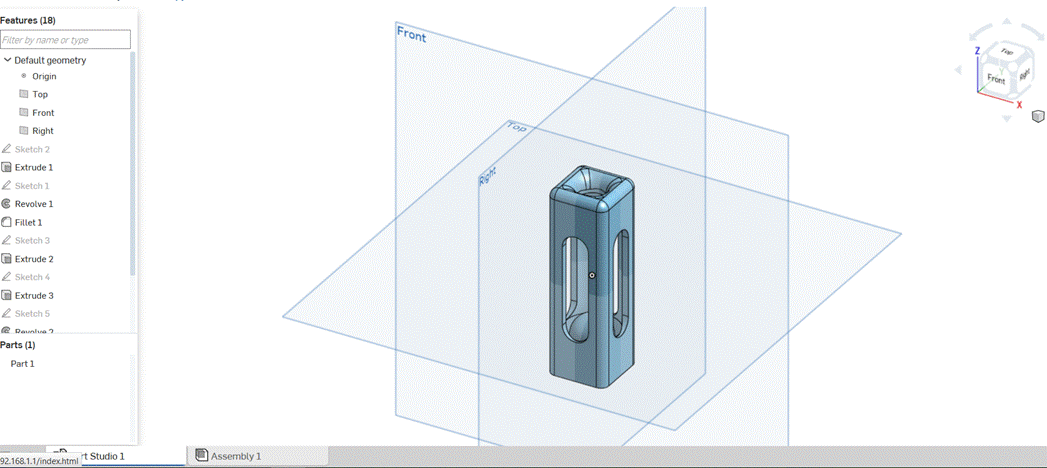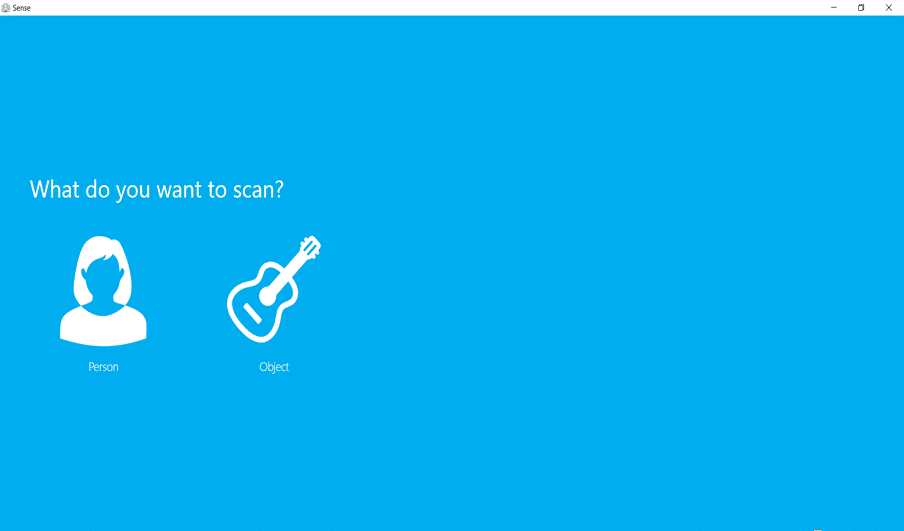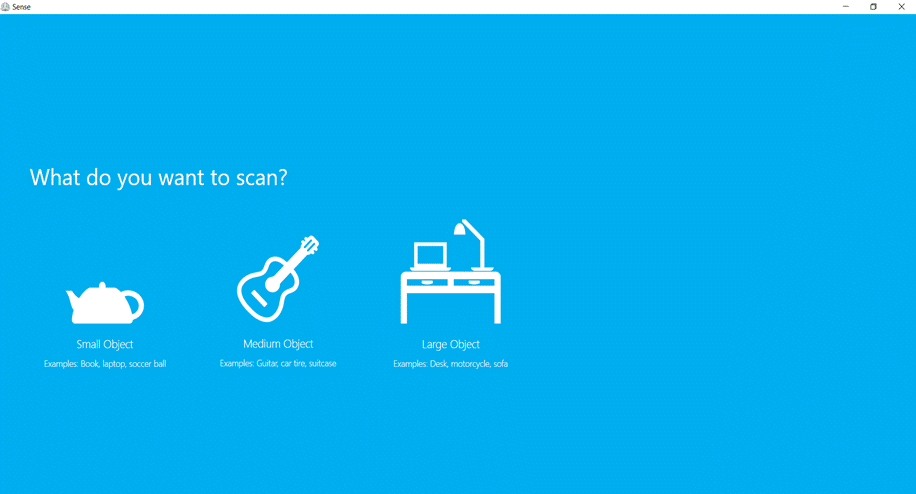Week 5
3d scanning and printing
In this week, the two assignment i done are 3D scanning of an object, designed a 3 dimensional object which i can print using a 3D printer.
3D Printing
For 3 D printing, I designed a ball in a cage and called as impossible. I used onshape for designing.

I export my this impossible named design to STL format.
3D printer and
filament
The 3 D printer used here is the Weistek’s Speed 3D printer. It prints very fast.
I loaded green filament into the machine and checked that filament extrudes well after proper heating of nozzle.The temperature of the nozzle is set to 2100 C.which is fine for the PLA type filament.

Weistek Speed 3D Printer with PLA filament
Slicing software and converting into the machine code:
The software used for converting the STL file into machine code is Real vision.
In this Software,the STL file is converted into the machine code as F-Code.
There are many tools and options in the application.We can scale the object,rotate it,flip,duplicate etc.
Temperature of the plate and the nozzle can be varied as well. After adjusting required options and settings, i converted into F code and exported into the USB drive.

After loading this converted file into the printer, I started print and finally i got my design printed completely.


3D Printed output
My 3D files,
Onshape design file here
my .stl file after onshape design is STL file
Result:
As per the design of mine, I got the 3D printed output.
The best part of 3D printing is we can see our 3D concept into reality.
3D scanning
For 3D scanning,i used sense first generation device.

Application
application used for scanning is sense.website

After connecting the scanner to PC, we have to choose the options. Object or the person. I want to scan a pepsi can. So i choosed the object.

Then i selected small object since it is a small.
Scanning
I placed the can on a table and rotated the scanner.

After that i got a 3D object. I solidified the object by solidify option and removed unwanted things got after scanning.Cropped the object and saved the final output as STL format. There is .obj format as well.


I prefered .STL format,which can be printed after converting the file in to f code format after slicing with the REAL vision software.
scanned output file for 3D scanner is : Pepsi can
The problems faced during the 3D scanning using sense is the rotation.For to get a complete shape,rotating around the object need to be very slowly to avoid the lose of tracking.
For what i learned or experienced in this week, i can say
that the 3D scanning and printing limitations:
3D Scanning limitations:
1- Can not scan
hidden designs and scans only surfaces.
2- Low accuracy
with the available low cost 3D scanners.
3- Cannot
determine the material that been scanned.
4- Hard to scan
transparent and reflective objects .
3D printing limitations:
1- Rough
surface with FDM printers and needs acetone steam bath
2- Sometime its
hard to remove the support especially if its inside the object and there is not
way to reach it
3- Low speed
4- Limited print materials, although SLA have many types of materials.
Also I understood
there are different types of materials used in 3D printing technology. Some of
them and their characteristics are.
1-
ABS(Acrylonitrile butadiene
styrene)
The product made of ABS is durable and impact resistant. It can be used
for functional Parts.
strength - Medium.
Density - 1010 kg/m³.
Flexibility- Medium
Durability –High
Difficulty to print- Medium
Print temperature (in degree Celcius) -210 - 250
Bed temperature(in degree Celcius) -50 - 100
2-
PLA(polylactic acid):
It is easy to print and bio degradable. It can be used for Consumer
Products.
strength - Medium.
Density - 1240 kg/m³.
Flexibility- low
Durability –Medium
Difficulty to print- low
Print temperature (in degree Celcius) -180 - 230
Bed
temperature(in degree Celcius) - No heated bed needed
3-
HIPS (high-impact
polystyrene)
This is dissolvable and biodegradable.Used as Support structures when
using ABS on a dual extrusion printer.
strength - Low.
Density - 1040 kg/m3
Flexibility- Medium
Durability – High
Difficulty to print- Medium
Print temperature (in degree Celcius) - 210 - 250
Bed temperature(in degree Celcius) - 50 – 100
4-
PVA(Polyvinyl alcohol)
This material is dissolvable, water Soluble, biodegradable and oil resistant.This
is used as support structures when using PLA or ABS on a dual extrusion
printer.This is hygroscopic and we need to keep sealed when not in use.
strength - High.
Flexibility- Low
Durability – Medium
Difficulty to print- Low
Print temperature (in degree Celcius) - 180 - 230
Bed temperature(in degree Celcius) - No heated bed needed.
5-
Nylon is a generic
designation for a family of synthetic polymers.
This is strong, flexible and durable. So can be used for all uses.
strength - High.
Flexibility- High
Durability – High
Difficulty to print- Medium
Print temperature (in degree Celcius) - 220 - 260
Bed temperature(in degree Celcius) - 50 - 100
6-
Wood
This is having its property as name gives.that is wood like finish. So this can be used for home
décor.
strength - Medium.
Flexibility- Medium
Durability – Medium
Difficulty to print- Medium
Print temperature (in degree Celcius) - 195 - 220
Bed temperature(in degree Celcius) - No heated bed needed.
7-
PET/(Polyethylene
terephthalate )
This is very strong,flexible,durable and recyclable. So this can
be used for all uses.
strength - High.
Flexibility- High
Durability – High
Difficulty to print- Medium
Print temperature (in degree Celcius) - 220 - 250
Bed temperature(in degree Celcius) - No heated bed needed.
8-
Polycarbonate (PC)
This is very strong,flexible,durable,transparent and heat resistant. So this can
be used for functional parts.
strength - High.
Density - 1.18 – 1.20 g/cm³
Flexibility- High
Durability – High
Difficulty to print- Medium
Print temperature (in degree Celcius) - 270 - 310
Bed temperature(in degree Celcius) - 90 - 105
9-
TPE(thermoplastic
elastomers )
This is plastics with rubber-like qualities.This is extremely flexible,rubber
like material.So it can be used in elastic parts and wearables.
strength - Low.
Flexibility- High
Durability – Medium
Difficulty to print- High
Print temperature (in degree Celcius) - 225 – 235
Bed
temperature(in degree Celcius) - 40